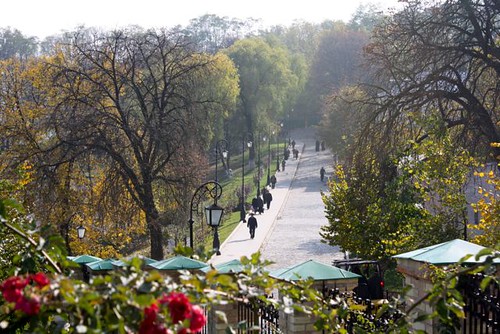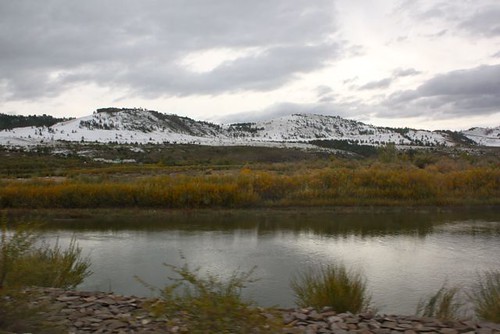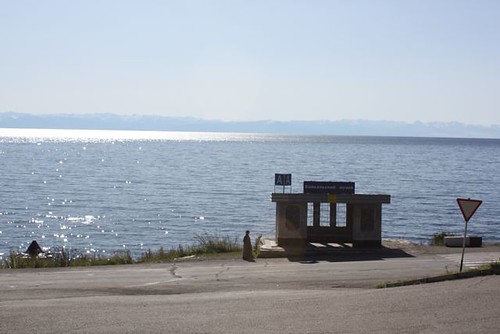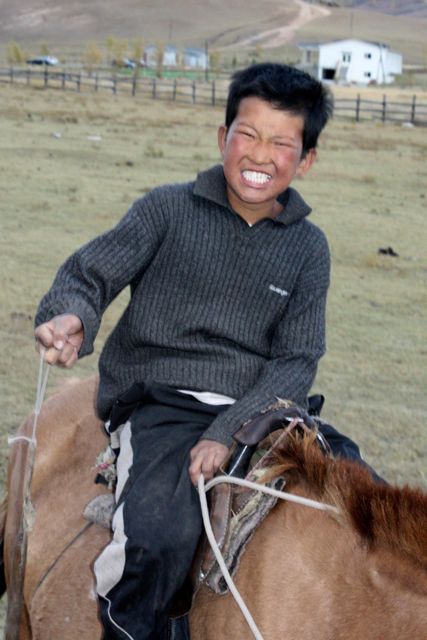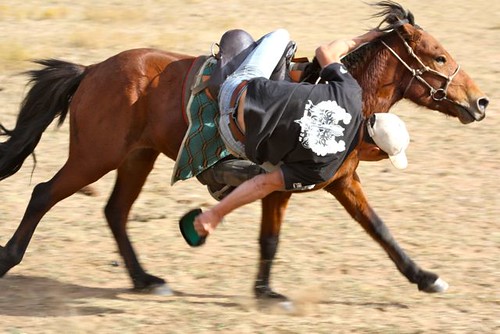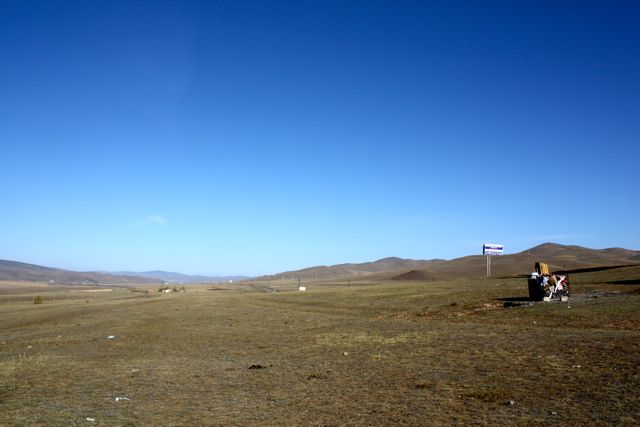
The City
As you approach Red Square, a stream of contradictions swirls before your eyes. At one end stands the awe-inspiring St. Basil’s Cathedral, complete with multi-colored onion domes. The influence of the Russian Orthodox church ripples outward across Russia from here. Opposite the Cathedral stands the State History Museum - home to a slightly cleansed version of Russia’s last one hundred years. The deep-red Kremlin wall runs the length of the square from the Cathedral to the State History Museum. It stands as an enduring reminder of political power in Russia from Tsars to the Bolsheviks, Perestroika to new democracy. Lenin peers across the square from his tomb situated directly in the center of the square. In perhaps the biggest contradiction of them all, he lays facing the GUM - one of the world’s most exclusive shopping malls and home to only the best designers and labels. But the bottom line, however, is this: if you’ve got the cash, you can do whatever you want. This is Moscow. Where money talks and nothing else.
The Lay of the Land
Moscow is situated along both sides of the Moscow River, which contains several islands and inlets. Red Square is at the center of it all, and several ring roads circle outward from there. This is not a walkable city. Fortunately, the extensive (and gorgeous) metro can take you everywhere you’ll want to go. Most museums and sites are situated around Red Square and north toward Pushkinskaya Square. The Arbat - a major pedestrian thoroughfare and once the center of Soviet Union counterculture - stretches west from Kremlin. Hotels, restaurants and nightlife are all around you. After all, this is the largest city in Europe! Grab a free city map when you arrive and get acquainted. This place is huge.
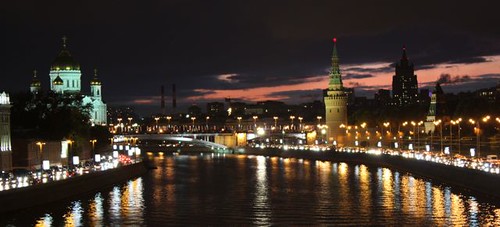
The Must-Sees and Must-Dos
A note on tourism in Moscow - with inflation at nearly 10%, prices are constantly changing. Rather than offer specifics for each site, simply expect to pay between $5 and $8 for most attractions. The Kremlin is Moscow’s priciest attraction at $10. While student discounts are available at every site, there seems to be no universal enforcement policy. That means some places will accept a foreign student ID, some places will accept an ISIC card and some places will only accept a Russian student ID. Finally, a note on opening times. They change all the time. Check with your accommodation upon arrival for an updated schedule. As a general rule, museums are closed on Mondays.
Red Square (Red Square, Metro Alexandrovsky Sad) Comprising St. Basil’s Cathedral, the GUM Shopping Mall, Lenin’s Tomb, Kazan Cathedral & The State History Museum, Red Square remains the epicenter of both Moscow and Russia. Take in each part of the “new Russia” by exploring the church, the politics and the consumer culture that now permeates the Moscow scene. A few tips:
Lenin’s Mausoleum is open from 10am to 1pm Tuesday to Sunday. Arrive early to snag a place in line. While passing through do not put your hands in your pockets and do not stop walking unless you want the Red Guard to have their way with you.
Make sure to stop by at night to see the buildings a-flitter in all their evening beauty. It is oddly magical.
The Kremlin (Red Square, Metro Alexandrovsky Sad) Straddling the entire southwest side of Red Square, the Kremlin has been the political epicenter of Russia for literally hundreds of years. Enter from the north side near the gardens just west of the Tomb of the Unknown Soldier. Don’t miss The Armoury (separate ticket necessary), which is full of the Russian Empire’s most divine treasures. Groups are allowed in at 10am, noon, 2pm and 4pm for 90 minutes. Arrive early! English audio guides included at no extra charge.
The Gulag Museum (16 Petrovka, Metro Alexandrovsky Sad) Traces the horrific period of forced imprisonment that found millions of Russians doing hard labour in the world’s harshest climate - Siberia. Ex-inmates are commonly around and very eager to share their stories. Exhibits are in Russian only so brining an English guide is highly recommended.
The Contemporary History Museum (21 Tverskaya ul, Metro Pushkinskaya, www.sovr.ru) Traces the history of Russia from Tsar to Lenin to Stalin to Gorbachev to Putin! All exhibits are in both Russian and English. A very well-constructed and surprisingly honest depiction of Russia’s last several hundred years.
Cathedral of Christ the Saviour (15 ul Volkhonka, Metro Kropotkinskaya) A masterpiece. The gold-covered onion domes are mesmerizing and visible from all over the city. Stalin had the original smashed to the ground and used the marble to build his beautiful subway. Version 2.0 was built in just two years at a cost of nearly $400 million. Admission is free.
Tolstoy Literary Museum (11 ul Prechistenka, Metro Kropotkinskaya) A plethora of superlatives telling the tale of perhaps Russia’s greatest novelist. The English captions alone are worth the visit. That and the museum’s first edition of War and Peace.
The Vodka Museum (Metro Partizanskaya, look for the enormous “Moscow Disneyland” looking structure and walk toward it, www.vodkamuseum.ru) Beyond kitsch but a telling English-language tale (maybe say “good English-language description”?) of where Russia’s most popular drink comes from. Massive collection of mint quality vodka bottles as well as Smirnoff’s first distilling bottle. Free shots at the end make it very worthwhile.
Izmaylovo Market (Metro Partizanskaya. Exit, turn left and walk straight until you run into a building. Follow the building around to the right. Keep walking straight for about 5 minutes and you’ll hit the market) The place for Russian dolls, mini Kremlins and vintage pins and badges. Delicious Georgian kebab are sold here as well.
Cosmonautics Museum (Metro VDNKh) While the exhibition is in Russian only, the videos of experiments conducted in space, Yuri Gregarian’s first space suit, an enormous collection of space ships and life-size reconstruction of Mir make this a must-see. The soaring 150-foot statue that sits atop the building is rather impressive as well.
Sculpture Park (10 Krimsky val, Metro Tretyakovskaya) Piles of old Lenin and Stalin statues are situated awkwardly amongst modern art installations and a bizarre country cottage. Great views of the enormous Peter the Great Statue as well, which sits in the Moscow River.
Novodevichy Cemetary & Convent (Luzhnetsky poezd, Metro Sportivnaya) The oldest in Moscow and still operating. The cemetery is the burial ground of some of Russia’s most famous figures as well. Check the listing upon entry to find out whose tombs are open.
The Arbat (Metro Biblioteka Lenina) Once the hub of Moscow (and Russia’s) counterculture, the Arbat is the first place you’d have seen Levi’s jeans and heard the Rolling Stones during Perestroika. Now it’s a fairly kitsch pedestrian thoroughfare lined with restaurants, shops and street performers. Make sure you walk all the way to the end to catch a glimpse at the majestic 1950’s Art Nouveau buildings that used to adorn Moscow’s skyline.
Ride The Metro (The Metro!) Believe it or not, it’s a tourist attraction in and of itself! Gorgeous chandeliers, bronze statues and tile mosaics adorn the walls and ceilings of the world’s most beautiful public transportation system. Start at Komsomolskaya and make your way around to Prospekt Mira, Novoslobodskaya, Krasnopresnenskaya, Kievskaya, Ploshchad Revolyutsii, Teatralnaya & Mayakovskaya in that order.
Banya - It’s a traditional Russian sauna complete with ritual tree branch slapping. Exhilarating, exhausting and interesting all at the same time. Try Banya on Presnya (7 Stolyarny, Metro Ulitsa 1905 Goda) $25 admission.

The Crash Pad
Moscow is now an international city and with that comes international hotels. Beyond the usual suspects - The Marriott, The Hyatt, W and so on - there are some hidden gems. But beware - accommodation is obscenely expensive. Expect to pay $350 a night at The Marriott. Some recommendations are below.
Hotel Metropol (1/4 Teatralny poezd, Metro Teatralnaya, www.metropol-moscow.ru) Quite possibly the most beautiful hotel in Russia. Tile mosaics, swirling staircases and 5-star luxury make this THE place to stay if money is no object. Rooms start at $500 a night.
Godzilla’s Hostel (6 Bolshoi Karetny, +7 (495) 699-4223, www.godzillashostel.com) Quite possibly the cleanest hostel this writer has ever seen. Offers both dorm and private accommodation, wireless internet, kitchens and a TV lounge with nightly movie screenings. Staff speaks excellent English. Dorms start at $25 a night while doubles run about $35 per person per night.

The Eats
People go on and on about how terrible Russian food is, but this writer is going to disagree. Yes it’s expensive (absurdly expensive) and yes it’s hearty, but it’s soul food through and through and there is nothing wrong with that.
Russian
Moo-Moo (45/23 ul Arbat, Metro Smolenskaya) While it is a chain, this Russian buffet-style restaurant offers hot meals and decent prices. Just point to what you want. Oh, and try to snag the table under the giant plastic tree. It adds to the ambiance. Meals $5 and up.
Yolki-Palki (8/10 Neglinnaya, Metro Kuznetsky Most) “Traditional Russian food” served by people wearing “traditional Russian outfits.” The kitsch-factor is off the charts, but the food is good and the stuffed roosters everywhere really gives it a little something extra. Try the kvass - a slightly alcoholic traditional Russian drink. Meals run $8 and up.
Pelmeshka (3/4 Kuznetsky Most, Metro Teatralnaya) Cheap. Russian. Grub. It’s that simply. Try the delicious pelmeni. Meals $6 and up.
Not Russian
TaDaCe (Metro Biblioteka Lenina) Sushi, meat dishes and Moscow’s cheapest pasta bowl at $1.75. Sushi runs $6 and up for 6 rolls. Free wifi.
Starlite Diner (16 Bolshaya Sadovaya, Metro Mayakovskaya) For whatever reason, Russians are fascinated with American-style diners and this may be the crowning achievement. Typical diner fair that is surprisingly delicious. Burgers $10 and up. American-size Pepsi $4. Open 24 hours.
Bits and Bobs
Coffee Shops - They are everywhere! Russians seem to be obsessed. Stop in for a cafe latte and a delicious cake.
Supermarkets - Look for the word “Market” and you’re all set. Prices are much lower than in restaurants and the fresh cheese and deli meats are divine.
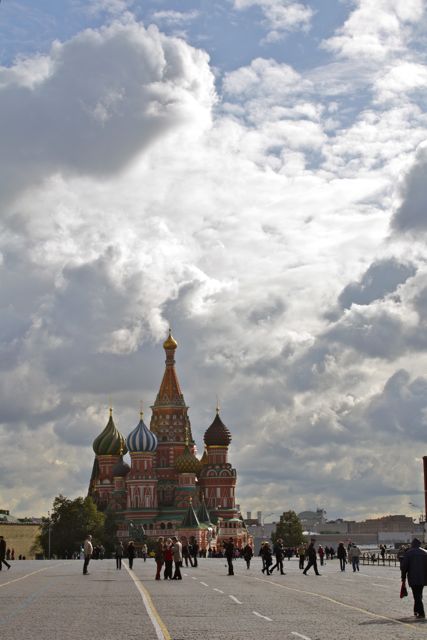
The Nightlife
Two things define Moscow nightlife - money and looks. “Face control” is now infamous as bouncers decide who enters and who doesn’t based on their hotness. Beware: they’re not afraid to let you know they think you’re ugly. ALWAYS dress to impress and if possible, arrive in a car. Make sure you take a second mortgage on your house before you head out. Cocktails start at $10 and go sky high from there.
Karma Bar (3 Pushechnaya, Metro Kuznetsky Most) Chilled out, relaxed and a generally liberal, mixed scene. Perfect for that after hours cocktail.
Propaganda (7 Bolshoy Zlatoustinsky, Metro Lubyanka) Still considered to be the best club in Moscow (and arguably Russia) Propaganda is the epitome of glitterati. Wear your Sunday best. Propaganda is gay on Sundays and the party is absolutely incredible. Again, cover varies but shouldn’t be more than $10.
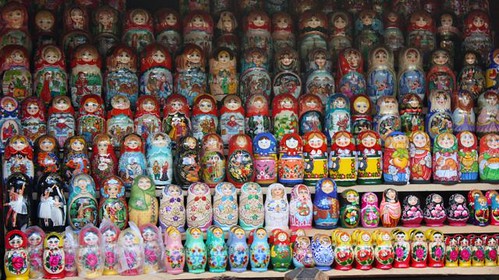
The Tips and Tricks
The Cyrillic Alphabet - Russia uses the cyrillic alphabet. At first it will look unintelligible. Take a few hours before you leave to learn it, as it will make getting around much easier. Many words are pronounced similarly, so being able to say them means you’ll be able to understand where you are and what you’re doing.
Tourist Map and Book - The city has a free guidebook called “In Your Pocket.” In it you’ll find restaurants, clubs, sites and most importantly - maps! Pick one up seemingly anywhere.
Hours and Prices Change Constantly - This is true for restaurants, museums and sites. Inflation is just under 10%, which means costs are going up and up. Take all estimates here lightly and know you’ll probably have to add 10-20% upon arrival.
Photo Permits – Russian museums like to snag a little extra cash by charging you to take pictures. The price ranges from $1.50 on up to $5. Don’t buy this “feature” at museums, as most exhibits prohibit pictures anyway. In the Armoury and in the churches it is highly recommended.
Registration - You have to register your presence with the government for all stays over 3 business days and within three days of arriving in Russia. Don’t mess with the police and just do it. Most hotels and hostels offer a registration service for around $20. Just have it done for you. Also, carry your passport on you at all times.













